
table of contents
- Different dimensions
- Earth fleas
- Leaf bugs
- Vine weevil
- Rodents
- Caterpillars
- Snails
- Birds
- Wildlife
- frequently asked Questions
Pests such as snails, leaf bugs or fleas make life difficult for the gardener. Today everything is still in order and the leaves and plants are pitted overnight. Damage patterns and control measures below.
In a nutshell
- Nudibranchs clean beds over night
- Ground fleas gnaw holes in cruciferous leaves
- Caterpillars love young leaves and leaf tips
- Ants eat pests and their larvae
- Caterpillars eat very large holes in the foliage
Different dimensions
Vegetables or ornamental plants have grown well, but suddenly overnight leaves are eaten away, they have holes or plants have disappeared completely. The damage caused by pests can take on completely different dimensions, such as:

- Leaves have more or less large holes
- Leaf margins with feeding damage
- Scraping damage to the underside or upper side of the leaf
- sometimes only leaf veins remain
Hail, fungal diseases and mainly animal pests can be responsible for these different types of damage to leaves or whole plants. It is important to recognize this in good time to avoid further damage to the garden. The most common are:
Earth fleas
These are beetles two to four millimeters in size. They are colored black, sometimes with yellow stripes. They occur particularly en masse during prolonged periods of drought. Her favorite food is mainly cruciferous leaves such as:
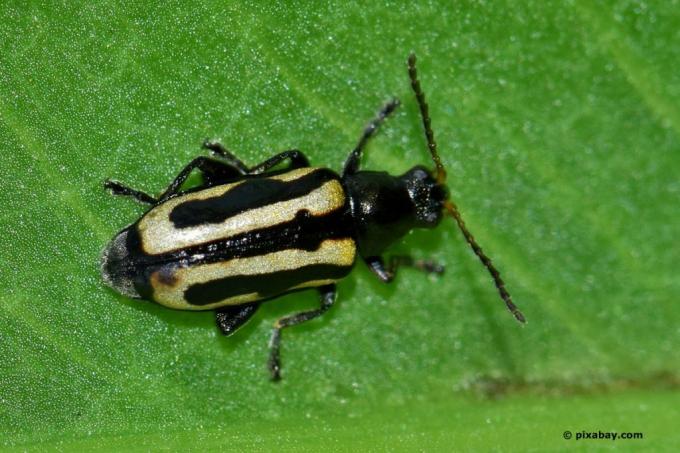
- radish
- radish
- Kohlrabi
- cauliflower
These are pitted and decorated with small holes. However, fleas can be controlled relatively easily:
- Loosen the soil regularly
- keep well moist
- Darken the soil with a layer of mulch
- so moisture remains in the ground
- Use of lawn clippings is ideal
- Mixed culture with onions and garlic
- Smell deters fleas
- continue to apply plant manure from tansy or wormwood
- Strips of glue between the rows
Tip: Dusting the plants with rock flour or algae lime also drives away these nuisances. They don't like the smell. At the same time, the plant is fertilized.
Leaf bugs
The bugs are particularly fond of young plants and actually don't stop at any plant. Are very popular:
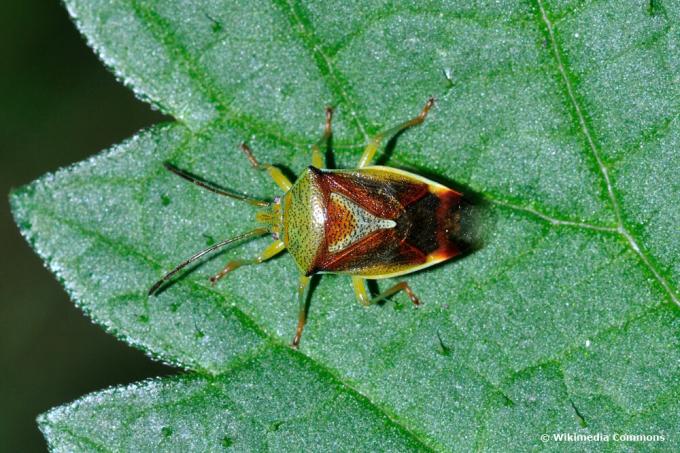
- Strawberries
- other soft fruit
- Vegetables like beans, potatoes, and cabbage
- Ornamental plants such as roses and hibiscus
The presence of leaf bugs can be recognized by the following occurring characteristics:
- typical pitting corrosion
- irregularly large, round holes on leaves
- Puncture site often discolored yellow
- leaves completely sifted in the event of severe infestation
- also attack fruits
- this makes deformities possible
Combating these pests is quite simple:
- just collect
- best in the early morning
- Animals are still sluggish
- in case of danger they drop to the ground
- pretend to be dead
- thus easy collection
- Keep the soil evenly moist
- always remove weeds
- Spraying the plants with a water jet
- then cover the plants with a vegetable fly net
- alternatively use soft soap suds
- Spray several times a day
Tip: Natural enemies of leaf bugs are birds and toads. Gloves should be worn when collecting, as they squirt a smelly secretion.
Vine weevil
They too are the horror of many gardeners. The black weevil are nocturnal. The leaves are pitted, but this is not dangerous for the plant. On the other hand, the situation is different with their larvae, which are active in the root area of the plant. There they nibble off the fine roots, which are responsible for water absorption, and later also the main roots. Ultimately, the plant dies. The first symptoms are:
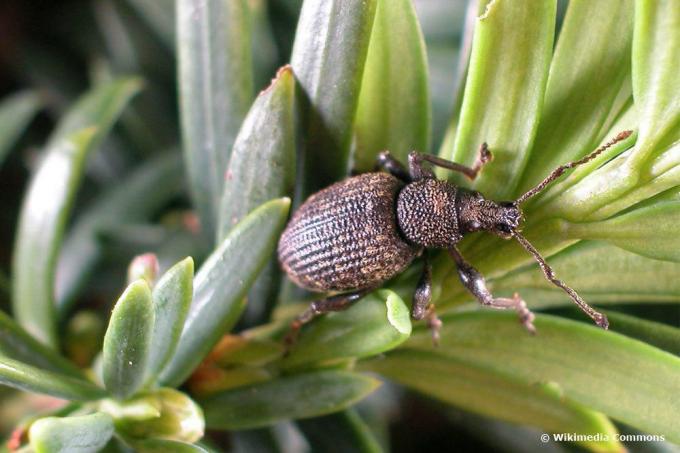
- small indentations and holes in the leaves
- prefers ornamental plants such as roses, cherry laurel, angel's trumpet
Control measures are:
- collect in the dark using a flashlight
- alternatively, place flower pots under the plant
- fill with wood wool
- Animals hide there
- then resettlement is easily possible
- Planting of strongly smelling plants such as marigolds, marigolds
- Use of nematodes
- Larvae available as a powder
- Addition to the irrigation water
- destroys pests within three days
Rodents
Mice are very common in gardens, mostly the field mouse. She lives on cultivated land, meadows and grasses and digs long corridors underground, so that the ground sometimes collapses. A well laid out vegetable patch is a perfect invitation for mice. They love fresh foliage and don't stop at fruits such as strawberries or the bark of bushes and trees.
Before a mouse plague occurs, first control measures should be taken:

- Animals are sensitive to smells
- hate smells like turpentine, elder, cypress, garlic, imperial crowns
- Place soaked turpentine rags at entrances and exits
- Spread garlic or make a brew
- also suitable stock made from elderberries
- Distribution along the aisles
- Planting cypresses or imperial crowns
- Mouse ears are sensitive, therefore
- Bury half of the glass bottles in the ground
- Wind whistling through opening is very uncomfortable
- Installation of metal windmills
- natural enemies: cats, birds of prey such as owls, buzzards
Tip: Mice, especially voles, also become active underground. They prefer to eat roots, onions and tubers. Affected plants die.
Caterpillars
Young foliage and shoot tips from various woody plants and other plants are very popular with them. The caterpillars that occur can be colored green, brown or gray. If the infestation is severe, it can lead to baldness. Most damage is caused by various butterfly larvae or sawfly larvae. It can damage the leaf margin or very large holes in the leaf itself. Measures can be:
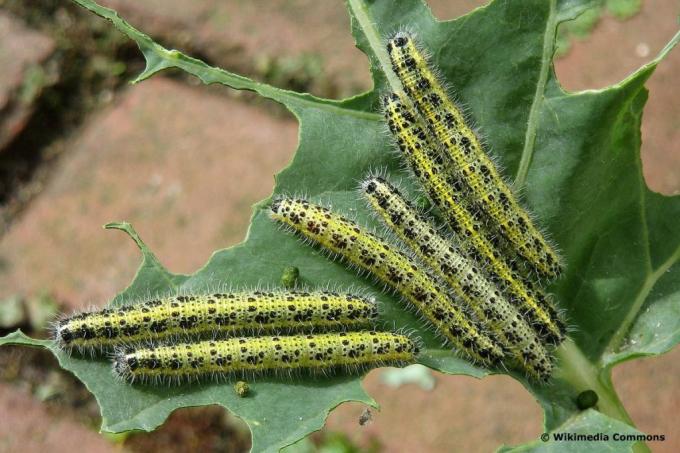
- collecting the animals
- Planting garlic
- Distribution of algae lime around the plant
Snails
Slugs are arguably any gardener's greatest enemy. Salad is particularly popular, but herbs, vegetables and flowers are not spurned either. Whole cultures can be destroyed overnight. Not only are leaves eaten, but sometimes complete baldness occurs. When snails appear for the first time, measures must be taken:
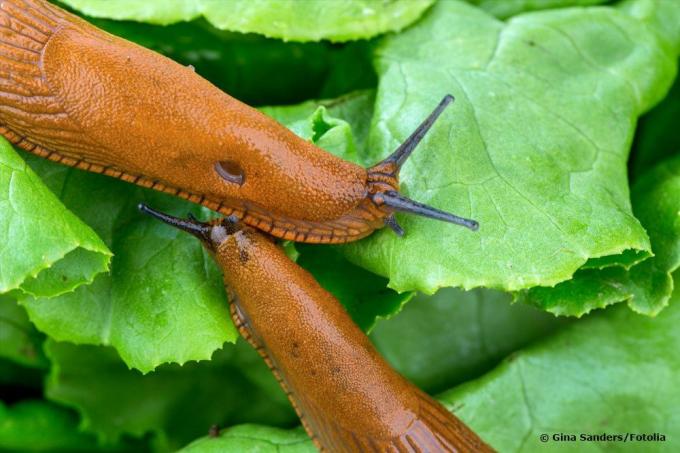
- collect regularly
- Set up bowls filled with beer
- Animals drown in it
- Laying out slug pellets or self-adhesive copper tape
- Place barriers made of pine needles, nutshells or eggshells around beds
- Water the beds in the morning
- Laying out pieces of cardboard or boards before rain
- Animals crawl under it
- easy picking up in the morning
- natural enemies: bird, toad, hedgehog, shrew, duck
Tip: Ants do not eat pest larvae, but also snail eggs.
Birds
Usually, birds in the garden are considered beneficial insects because they actively help with pest control. However, some feathered friends such as starlings, blackbirds, pigeons and sparrows can also do a lot of damage to gardens such as:
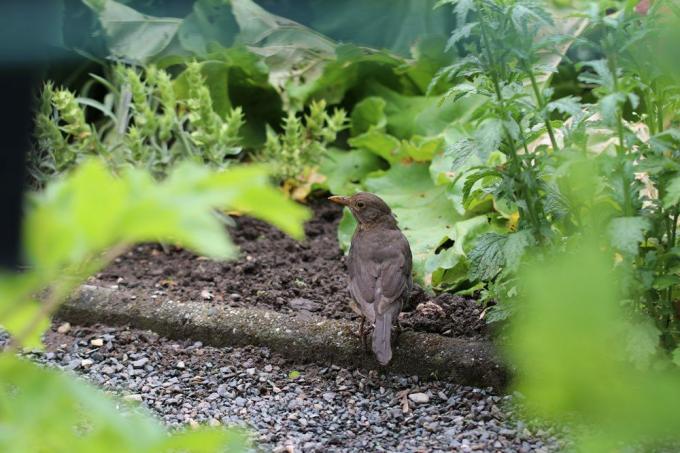
- Eating damage to fruits
- mainly blackbirds and starlings
- Leaf damage on young vegetables
- Salad is very popular
- The main cause is pigeons and sparrows
- no protection of seeds and seedlings
There are, however, various options for protecting against birds:
- Cover with bird protection nets
- mainly vegetable and strawberry beds
- Lineup of scarecrows
- Use of glittering, fluttering and noise-making materials
- Bird deterrent strips made of colorful aluminum strips
- CD discs can also be used
- Installation only for a short time
- Animals get used to it quickly
Wildlife
Even Wildlife such as deer and wild rabbits like to take a break in their own gardens. Deer love the foliage of fruit trees, ornamental plants, rose buds and tree bark and wild rabbits like to get lost in vegetable beds and flower beds. Here leaves are eaten or completely eaten. In order to prevent game browsing, appropriate measures should be taken:
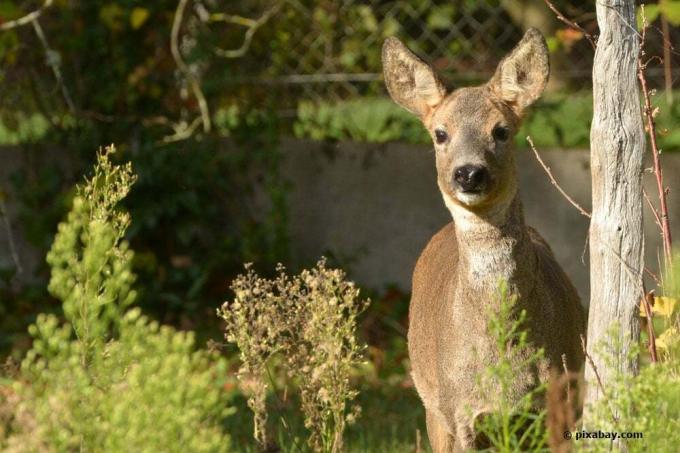
- high fence or hedge
- at least 150 cm high
- close-knit
- only 4 cm large meshes
- Dig 40 cm deep into the ground
- Protect trees with plastic trunk protectors or wire trousers
- alternatively white lime paint
- Powder roses and vegetables with stone flour
- has a bitter taste
- Place branches of apple trees away from plants
- distract rabbits from the vegetable patch
- Use of deterrent "Wildstopp"
- unpleasant smell and taste
- consists of blood meal
frequently asked Questions
A healthy plant in its optimal location is usually spared from pests. With regular green manure, compost or mulching, the plants are strengthened. Dusting with rock flour or algae lime also repels pests, but promotes the growth of the plant. Plant manure can also be used. In order to prevent snail infestation, beds should be raked smoothly in autumn and only dug up after the first frost. This prevents eggs from being laid in cracks in the earth.
Naturally. As a result, natural predators such as ear crawlers, parasitic wasps, ladybugs, etc. lured into the garden. The most varied of plant pests are at the top of their menu.
In some garden centers and on the Internet, eggs from a wide variety of predators are offered. These stick to small cards and only have to be hung on the plant. After a few days, the animals hatch and begin their work.

